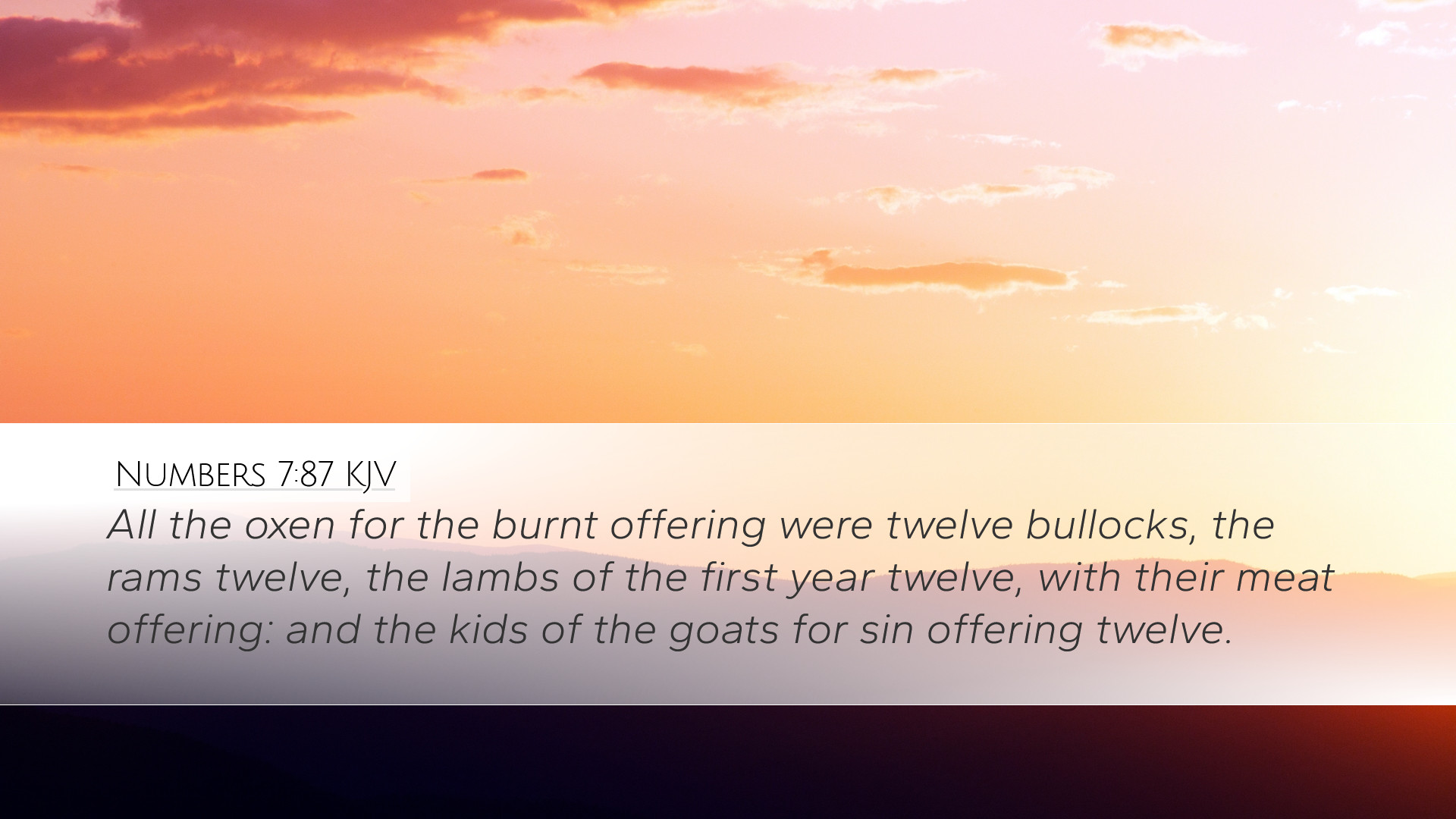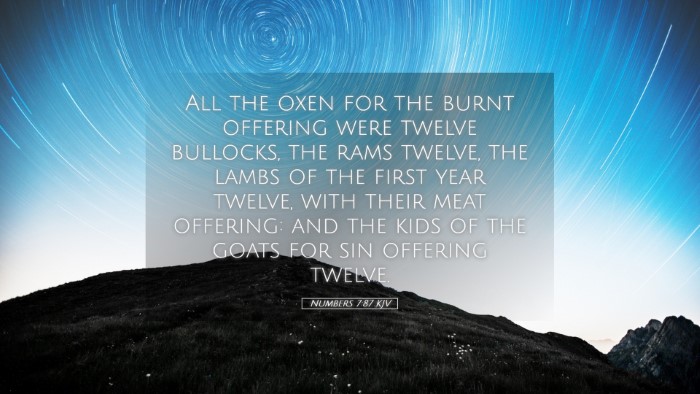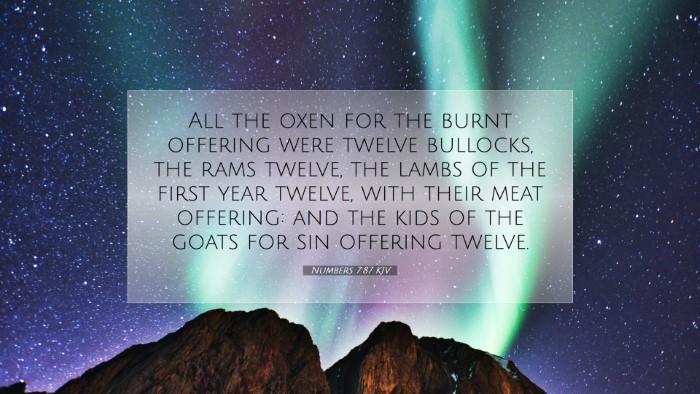Commentary on Numbers 7:87
Verse: "All the oxen for the burnt offering were twelve bullocks, the rams twelve, the lambs twelve, with their meat offering: and the kids of the goats for sin offering twelve." - Numbers 7:87
Introduction
This passage occurs within the context of the offerings made at the dedication of the tabernacle. The meticulous detail surrounding the offerings signifies their importance in Israel's worship and relationship with God. In this commentary, insights will draw from several public domain sources, including Matthew Henry, Albert Barnes, and Adam Clarke, exploring the significance of the number of offerings, the types of animals used, and the theological implications of such sacrifices.
Contextual Analysis
Numbers 7 describes the gifts and offerings brought by the leaders of the tribes of Israel during the dedication of the tabernacle. The account emphasizes communal participation in worship and the holiness required in approaching God.
The Significance of the Offerings
Henry highlights that the offerings were not merely ceremonial but were representative of the people's dedication and reverence towards God. The offering of oxen, rams, lambs, and goats symbolizes various aspects of sacrifice:
- Oxen (Bullocks): Represent strength and servanthood. In the ancient world, oxen were significant for labor and agriculture, signifying the strength of the offerings presented to God.
- Rams: Traditionally associated with atonement and consecration. The rams denote the idea of being set apart for God’s purposes.
- Lambs: Symbolic of innocence and purity, the lambs were central to the Passover and established the theme of substitutionary atonement.
- Kids of the goats: Used for sin offerings, they exemplified the need for atonement and the seriousness of sin.
Each category of offerings played a unique role in reflecting the multifaceted nature of worship and sacrifice in ancient Israel.
The Number Twelve
The repetitive use of the number twelve (noted with each type of sacrifice) is particularly striking. Albert Barnes notes that this number represents the twelve tribes of Israel, symbolizing completeness and divinely ordained order. The dedication of the tabernacle was not just an individual act but an assembly of the whole nation. Thus, the offerings are representative of the collective will and devotion of the people of God.
Theological Implications
Adam Clarke provides profound insights into the theological implications of these sacrifices. He emphasizes that these offerings serve as prefigurations of Christ's ultimate sacrifice. Just as the bullocks, rams, and lambs were offered to God, Christ, as the Lamb of God, was offered to atone for the sins of humanity. The animals signify the seriousness of sin and the need for sacrifice, which culminates in the New Testament with Jesus’ sacrificial death.
Application for Today
For pastors and theologians, this passage serves as a reminder of the importance of sacrifice in our relationship with God. The offerings denote an attitude of reverence and the need for repentance. In modern worship, the principles of sacrifice and dedication remain crucial. Just as Israel brought their offerings, believers are called to present themselves as living sacrifices, holy and acceptable to God (Romans 12:1).
Conclusion
Numbers 7:87, with its detailed account of offerings, extends beyond mere historical narrative. It encapsulates essential truths about worship, sacrifice, and communal dedication to God. The insights drawn from Matthew Henry, Albert Barnes, and Adam Clarke help illuminate the richness of this passage, revealing layers of meaning applicable to contemporary faith. In recognizing the depth of these sacrificial acts, believers are encouraged to consider their own lives and what it means to offer themselves fully to God in service and worship.


